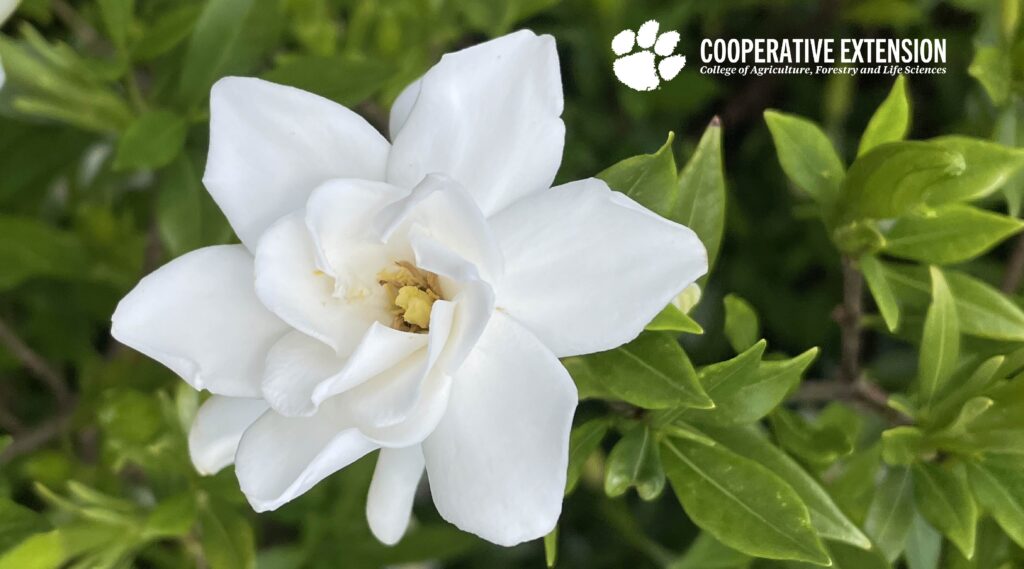

Wild plant identification is the process of recognizing and naming plants that grow in the wild. It involves learning about the characteristics of different plant species and using this knowledge to identify them in their natural habitat.
The importance of wild plant identification lies in its practical applications, such as foraging for edible plants, avoiding poisonous ones, and understanding the ecological roles of various plant species. It also contributes to a deeper appreciation and understanding of the natural world and the diverse plant life that exists in different environments.
Being able to identify wild plants can also be crucial for survival in outdoor activities such as hiking and camping, as it allows individuals to make informed decisions about the plants they encounter and their potential uses or dangers.
Check out this Youtube video: “Wild Plant Identification and Use” for valuable information on foraging and cooking in the wilderness!
The Basics of Wild Plant Identification
Understanding Plant Morphology
Plant morphology involves studying the physical form and external structure of plants. This includes the features of stems, leaves, and flowers.
Understanding the morphology can aid in identifying different plant species and their characteristics.
Identifying Plants by Leaves
Leaves play a crucial role in identifying plant species. Observing the leaf arrangement, shape, vein patterns, and differences between leaves near the base and the top can provide essential clues for plant recognition.
Identifying Plants by Flowers
Flower characteristics such as shape, color, markings, as well as the arrangement of petals, stamen, and pistils are valuable features for identifying plants. Examining the back of the flower head, including the calyx/sepals and hairs, also contributes to plant identification.
Tools for Wild Plant Identification
Using Field Guides
Field guides such as the “Peterson Field Guide to Medicinal Plants and Herbs” are essential for accurate wild plant identification. These guides offer vivid illustrations and comprehensive information to aid in the identification of various plant species.
Additionally, “The Manual of Grasses of North America” is a valuable resource for identifying grasses in the wild.
Utilizing Plant Identification Apps
Plant identification apps like “PlantNet Plant Identification” and “PlantSnap” are incredibly useful tools for on-the-go plant identification. These apps provide quick and accurate identifications, making them ideal companions for outdoor enthusiasts and foragers.
Joining Online Plant Identification Communities
Being part of online plant identification communities, such as the “r/botany” subreddit, provides valuable opportunities to engage with fellow enthusiasts and experts. These communities offer a platform to seek assistance in identifying plants and gain insights from experienced members.
| Field Guides | Plant Identification Apps | Online Communities |
|---|---|---|
| Peterson Field Guide to Medicinal Plants and Herbs | PlantNet Plant Identification | r/botany subreddit |
| Manual of Grasses of North America | PlantSnap | – |
Safety Precautions in Wild Plant Identification
Avoiding Poisonous Plants
When venturing into the wilderness, it’s crucial to be cautious of poisonous plants such as Poison Ivy, Poison Oak, and Poison Sumac. These notorious plants can cause severe skin rashes and irritation, so it’s essential to familiarize yourself with their visual appearances beforehand.
Take extra care to avoid Giant Hogweed, Stinging Nettle, Australian Stinging Tree, Wild Parsnip, and Poison Hemlock, as they can pose significant health risks.
Considering Allergies and Irritants
In addition to poisonous plants, it’s important to consider allergies and irritants that certain plants may trigger. Common plants and trees such as Birch, Elm, Cedar, Oak, Pine, Poplar, Walnut, and Ragweed can induce allergic reactions.
Ragweed, for instance, is a particularly invasive plant known for causing seasonal allergies. When working with landscaping and gardening, it’s crucial to take precautions to avoid direct contact with these allergens.
Factors to Consider in Wild Plant Identification
Location
When identifying wild plants, the location plays a crucial role. Some plants thrive in specific environments, such as wetlands or woodland areas.
Pay attention to the geographical features and microclimates, as they heavily influence the types of plants that can be found in a particular location.
Season
The season is a key factor in wild plant identification. Certain plants bloom in the spring, while others flourish in the summer or fall.
It’s essential to recognize the seasonal variations in plant growth and flowering patterns to accurately identify and utilize wild plants.
Habitat
Understanding the habitat where wild plants grow is essential. Some plants prefer moist, shady areas, while others thrive in open, sunny spaces.
By considering the habitat, you can narrow down the potential species and better identify the wild plants in their natural environment.
I hope you find these insights beneficial in your wild plant identification pursuits!
Common Mistakes in Wild Plant Identification
Relying solely on online resources can lead to misidentification of wild plants. Although apps like Pl@ntNet can help with identification, they may not always provide accurate results.
It’s crucial to cross-reference information with field guides or seek guidance from experienced foragers to ensure correct plant identification.
Mistaking one plant for another is a common error in wild plant identification. For example, distinguishing between wild grapes and moonseed can be challenging, as both plants produce fruit in bunches and bear a striking resemblance.
This mistake highlights the importance of thorough research and hands-on learning to avoid potential dangers associated with misidentifying wild plants.
Ethics and Best Practices in Wild Plant Identification
Respecting the Environment
Respecting the environment when identifying wild plants is crucial for maintaining ecological balance. Understanding the local ecosystem and being aware of endangered or protected plant species in the area is essential.
This involves conducting thorough research on the bioregion to identify which plants are at risk and should therefore be preserved. By respecting the environment, foragers contribute to the preservation of diverse plant species and the sustainability of the natural habitat.
Responsible Foraging Practices
When engaging in wild plant identification and foraging, it is imperative to uphold responsible practices. This includes being mindful of the impact of harvesting on the plant population and surrounding ecosystem.
Foragers should avoid over-harvesting, as it can disrupt the natural growth cycles and even lead to the decline of certain plant species. Additionally, ensuring that the parent organism remains unharmed during harvesting is essential for the continued regeneration of plant life.
Responsible foraging practices contribute to the sustainability of wild plants and their habitats.
Benefits of Wild Plant Identification
Food Sources
- Wild plant identification allows you to source fresh and organic ingredients for your meals straight from nature’s pantry.
- Embracing wild edible plants broadens your culinary horizons, offering unique flavors and diverse nutrients not found in traditional produce.
Medicinal Plants
- Identifying wild medicinal plants enables you to harness nature’s healing properties for various ailments and health remedies.
- Understanding the medicinal potential of wild plants empowers you to create natural remedies for common health issues, promoting holistic wellness.
Landscaping and Gardening
- Wild plant identification enhances landscaping and gardening by incorporating native species that thrive in your specific environment.
- Incorporating native plants not only beautifies your outdoor space but also supports local ecosystems and biodiversity.
| Aspect | Importance |
|---|---|
| Food Sources | Fresh, organic ingredients with unique flavors and diverse nutrients |
| Medicinal Plants | Natural remedies for common health issues and holistic wellness |
| Landscaping and Gardening | Beautification, ecosystem support, and biodiversity enhancement |
Challenges in Wild Plant Identification
Similar-looking Species
One of the major challenges in wild plant identification is the presence of similar-looking species. For example, when identifying spring wildflowers, it can be difficult to distinguish between species that share common colors or shapes.
This creates confusion and increases the risk of misidentification, which could have detrimental consequences for foragers or outdoor enthusiasts.
Lack of Resources
Additionally, another significant challenge is the lack of resources available for accurate plant identification. While there are various automated plant identification applications and guides, the accuracy and coverage of these resources may be limited.
This scarcity of reliable and comprehensive resources hinders the process of correctly identifying wild plants, ultimately impacting the safety and well-being of individuals in outdoor environments.
Cultivating a Passion for Wild Plant Identification
Encouraging Curiosity in Nature
Encouraging curiosity in nature can be as simple as going on nature walks with your children. Take the time to notice the little details and listen to the natural sounds around you.
Engaging in activities such as birdwatching or searching for animal footprints can ignite curiosity and appreciation for the natural world.
Connecting with Like-minded Individuals
Connecting with like-minded individuals who share your passion for wild plant identification can be incredibly rewarding. Joining local nature groups or engaging in online forums allows for the exchange of knowledge and experiences.
Celebrating and nurturing healthy habitats alongside individuals who share a similar passion can further enhance your connection with the natural world.
Adapting Wild Plant Identification Skills for Different Regions
Understanding Regional Flora and Fauna
To adapt wild plant identification skills for different regions, understanding the regional flora and fauna is crucial. Each region has its unique plant life influenced by climate, soil, and geography.
By studying the native flora and fauna, you can learn to identify specific plant species and understand their ecological context within the region.
Communicating with Local Experts
Engaging with local experts is invaluable for adapting wild plant identification skills. Local botanists, herbalists, and indigenous communities possess deep knowledge of regional plant life.
By seeking their guidance and building relationships, you can gain insights into plant identification techniques specific to the region and learn about the traditional and practical uses of various plants.
Recommended Amazon Products for Wild Plant Identification
Here’s a curated list of products that can help you with wild plant identification. These recommendations are based on functionality, price, and positive reviews.
Bushnell H2O Waterproof/Fogproof Roof Prism Binocular
These binoculars are highly recommended for identifying wild plants from a distance. The waterproof and fog-proof features make it suitable for outdoor use.
Its compact size and durable construction make it an ideal tool for plant identification in the wild.
National Geographic Pocket Guide to the Wildflowers of North America
This field guide is an excellent resource for identifying wildflowers in North America. With detailed descriptions, color photographs, and range maps, it is a valuable companion for enthusiasts.
The compact size of this guide makes it easy to carry during outdoor excursions.
iNaturalist Plant Identification App
The iNaturalist app allows users to identify plants and animals using image recognition technology. It provides a platform for users to contribute to biodiversity science and connect with a community of naturalists.
The app’s user-friendly interface and vast database make it an indispensable tool for wild plant identification.
Leatherman Wingman Multitool
This multitool is recommended for its versatility in outdoor activities, including wild plant identification. With features such as knife, pliers, scissors, and screwdriver, the Leatherman Wingman is useful for various tasks.
Its compact size and durable construction make it an essential tool for plant identification in the wild.
Vortex Optics Diamondback Roof Prism Binoculars
The Vortex Optics binoculars are highly regarded for their superior optical performance and durability. With multi-coated lenses and a wide field of view, they provide clear and detailed views of wild plants.
The waterproof and fog-proof design makes them suitable for outdoor use in various weather conditions.
Top Recommended Product for Wild Plant Identification
If you’re looking for the best solution for wild plant identification, we highly recommend the Bushnell H2O Waterproof/Fogproof Roof Prism Binocular (https://www.amazon.com/s?k=Bushnell+H2O+Waterproof/Fogproof+Roof+Prism+Binocular). These binoculars offer exceptional functionality, durability, and value for outdoor enthusiasts and plant identification enthusiasts.


| Pros | Cons |
|---|---|
| Waterproof | May be pricey |
| Fog-proof | Slightly heavy |
| Durable |
Ready to improve your wild plant identification skills? Check out the Bushnell H2O Waterproof/Fogproof Roof Prism Binocular today for the best results!


Conclusion
Wild plant identification is an important skill for anyone who spends time outdoors, whether for hiking, foraging, or just enjoying nature. By learning to identify wild plants, individuals can better understand their surroundings and make informed decisions about their interactions with the natural environment.
Furthermore, wild plant identification can also be crucial for safety, as it allows individuals to avoid poisonous or harmful plants. This knowledge can prevent accidental ingestion or contact with harmful species, reducing the risk of illness or injury during outdoor activities.
Wild plant identification enhances the overall outdoor experience, allowing individuals to appreciate the diversity of plant life and fostering a deeper connection to the natural world. It empowers people to be more mindful of their surroundings and make responsible choices when interacting with the environment.









